Snapshots from Antarcticathe journey heritage ice and snow Mount Erebus scenic vistas fellow travellers life saver wildlife albatross penguins petrel and skua seals whales
There have been 35 species of bird identified living south of the Antarctic Convergence, with only 19 of these species that actually breed in Antarctica. These include a number of petrel species and skuas species.
Snow Petrel (Pagodroma nivea)
The Snow Petrel (Pagodroma nivea) is a beautiful looking sea bird, being pure white with black eyes, beak and underdown. Snow petrels do not migrate in the winter, instead living on the continent all year-round.
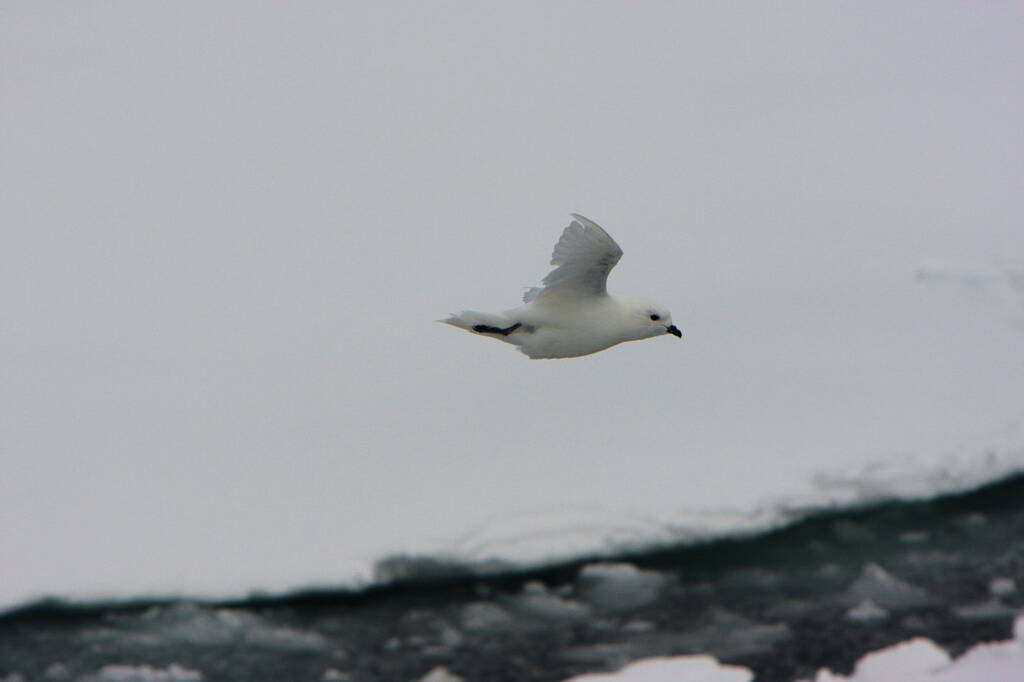
- Scientific classification
- Kingdom: Animalia
- Phylum: Chordata
- Subphylum: Vertebrata
- Informal: Gnathostomata
- Class: Aves
- Order: Procellariiformes
- Family: Procellariidae
- Subfamily: Procellariinae
- Genus: Pagodroma
- Species: Pagodroma nivea
Southern Giant Petrels (Macronectes giganteus)
Southern Giant Petrel (Macronectes giganteus), also known as the Antarctic Giant Petrel, can be distinguished by the colour of their bill-tip, the southern being greenish, whilst the northern is reddish.
The Southern Giant Petrel feed on fish, krill, squid, offal and carrion. They are an extremely aggressive predator and will kill other seabirds.
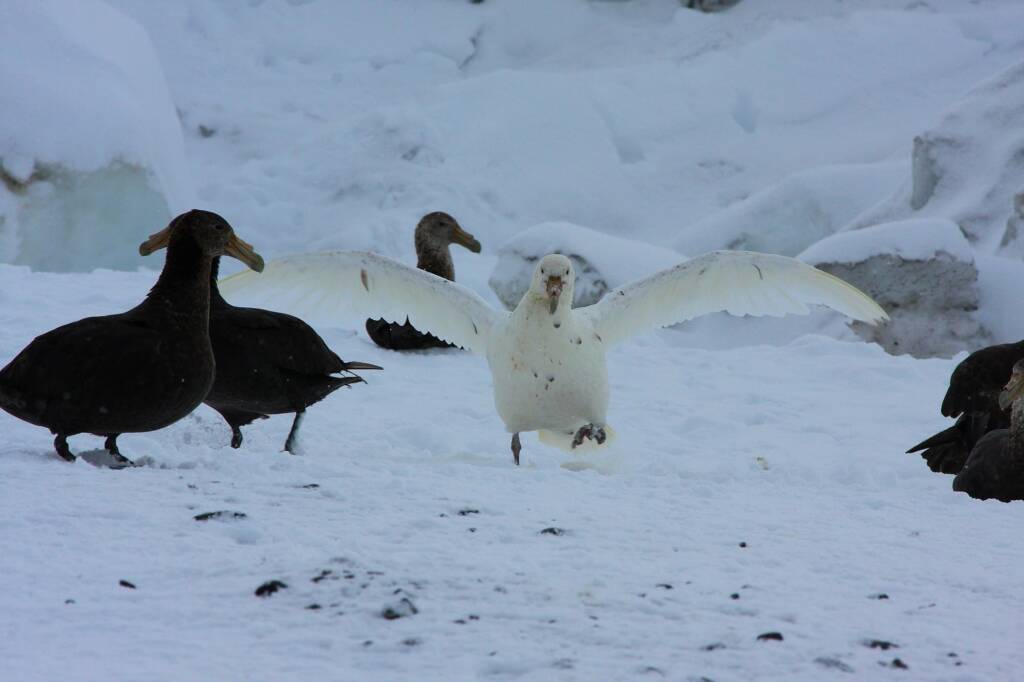
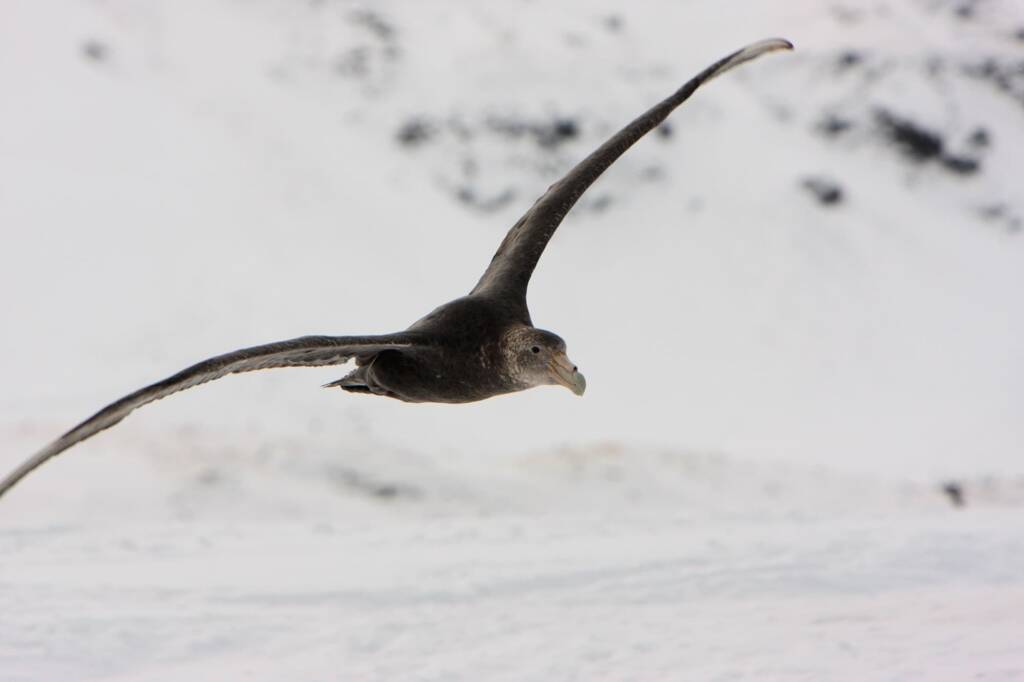
- Scientific classification
- Kingdom: Animalia
- Phylum: Chordata
- Subphylum: Vertebrata
- Informal: Gnathostomata
- Class: Aves
- Order: Procellariiformes
- Family: Procellariidae
- Subfamily: Procellariinae
- Genus: Macronectes
- Species: Macronectes giganteus
One of the dominant birds in the Antarctic region are the Antarctic Skuas, of which there are a number of species in the genus Stercorarius. All of them are predators, feeding on marine life, penguin eggs and juvenile birds. They also been observed rummage through human trash looking for food.
Skuas do not build a nest, instead laying their eggs on flat ground or shallow depressions, often in sheltered locations on rocky outcrops, cliff sides or valley floors. They fiecerly defend their eggs and young against other predators.
Catharacta skua lonnbergi (Stercorarius antarcticus infrasp. lonnbergi)
The skuas are a group of predatory seabirds with seven species forming the genus Stercorarius, and the only genus in the family Stercorariidae.
The Catharacta lonnbergi (common name Subantarctic Skua) is a opportunistic scavenger and predator, that will also steal food from other birds. They are know to eateggs, young and adult birds, crustaceans, molluscs, fish and small mammals (such as black rats and rabbits), Antarctic Fur Seal and carrion.
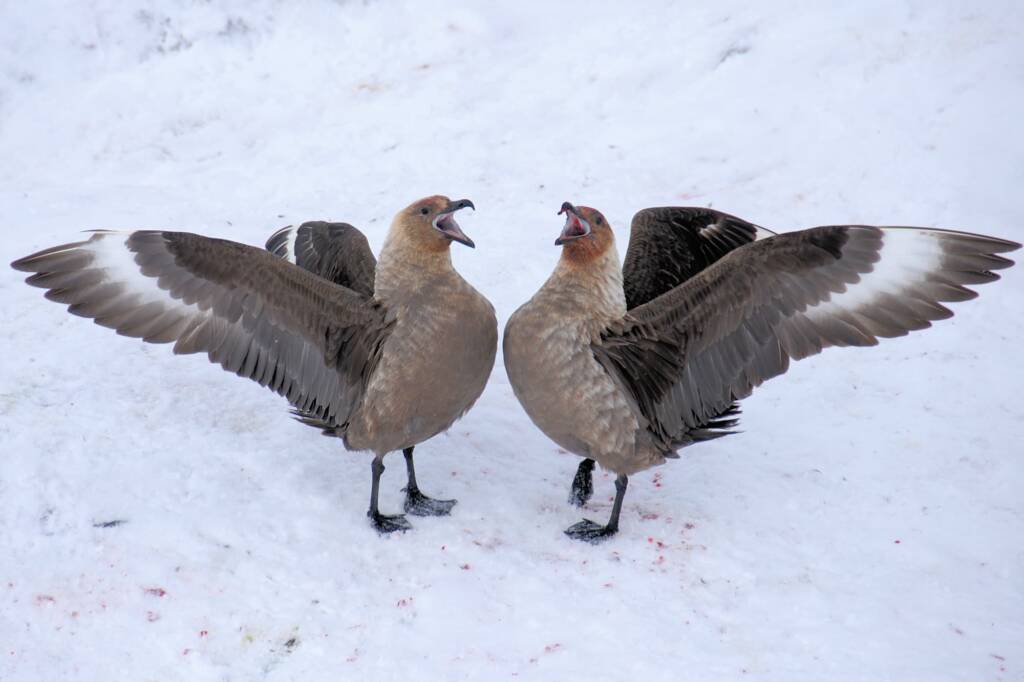
- Scientific classification
- Kingdom: Animalia
- Phylum: Chordata
- Subphylum: Vertebrata
- Informal: Gnathostomata
- Class: Aves
- Order: Charadriiformes
- Family: Stercorariidae
- Genus: Stercorarius
- Species: Stercorarius antarcticus
- Subspecies: Stercorarius antarcticus lonnbergi (Mathews, 1912)
South Polar Skua (Stercorarius maccormicki)
The South Polar Skua breed once a year during the Antarctic summer, laying eggs at the end of November into December. The skuas usually lay two eggs, with hatchlings ready to fly between February and March.
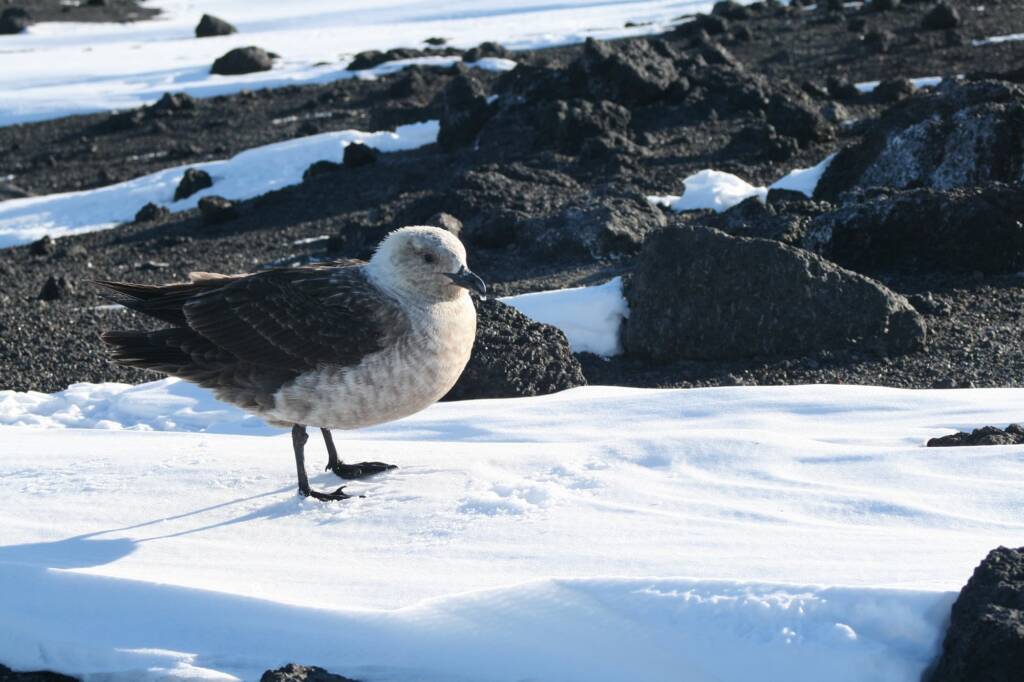
- Scientific classification
- Kingdom: Animalia
- Phylum: Chordata
- Subphylum: Vertebrata
- Informal: Gnathostomata
- Class: Aves
- Order: Charadriiformes
- Family: Stercorariidae
- Genus: Stercorarius
- Species: Stercorarius maccormicki
Footnote & References
- Antarctic Travel Photographs © Jennifer Cooke (and fellow travellers)
- Additional Antarctic Travel Photographs © to fellow travellers (courtesy of Jennifer Cooke)
Snapshots from Antarcticathe journey heritage ice and snow Mount Erebus scenic vistas fellow travellers life saver wildlife albatross penguins petrel and skua seals whales
Snapshots from AustraliaSnapshots from New South Wales Snapshots from the Northern Territory Snapshots from South Australia Snapshots from Antarctica Snapshots Road Trains in Australia Snapshots from Ausemade Facebook The Tree of Life…
